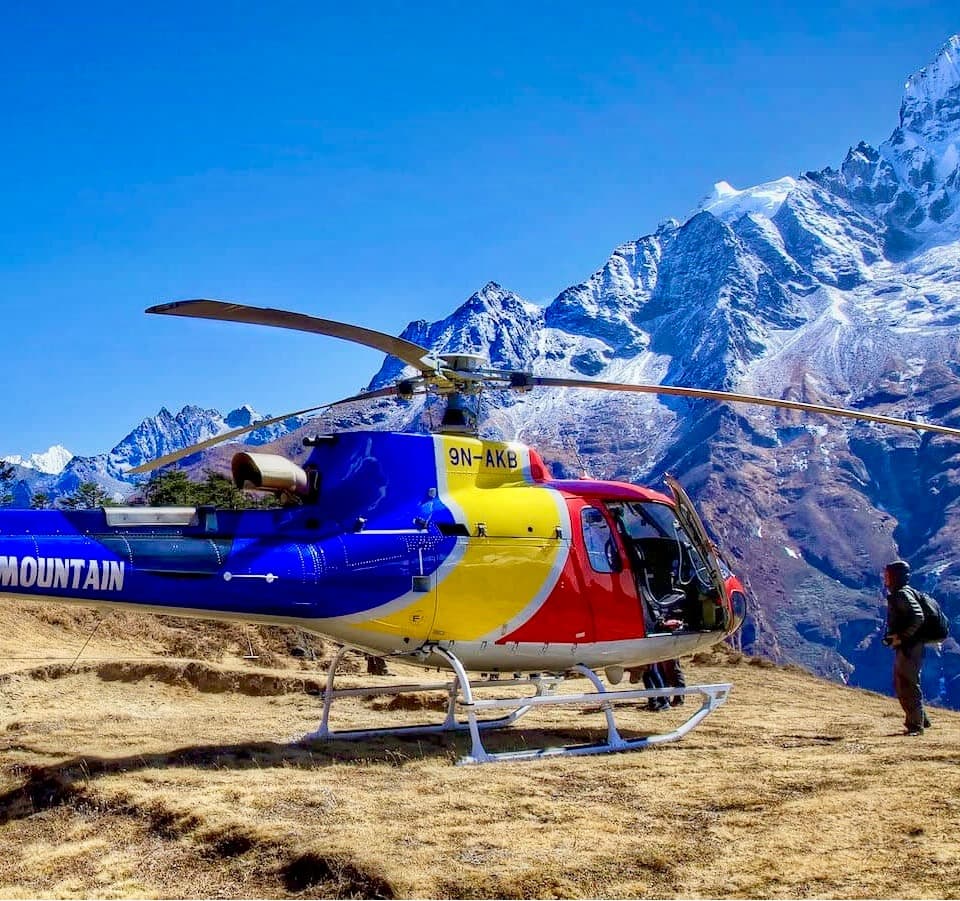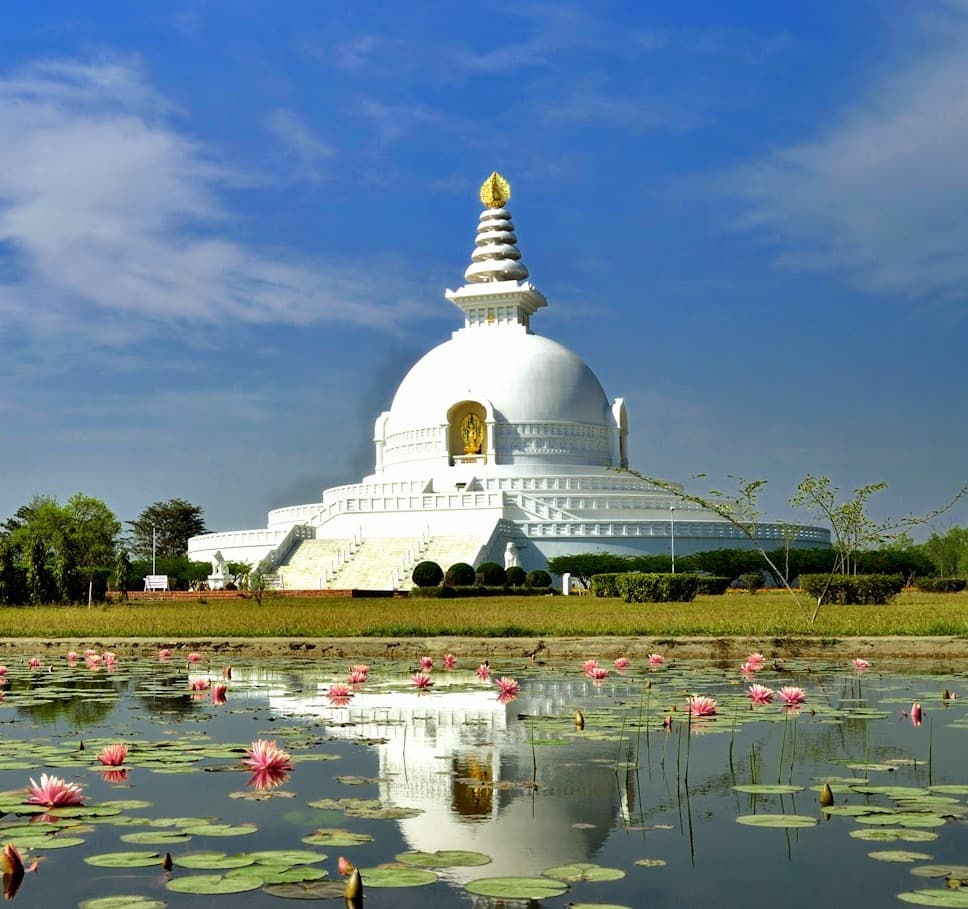Flight Information
For this luxury 9-day Nepal adventure, international flights to and from Kathmandu are not included in the package and should be arranged separately. Upon arrival at Tribhuvan International Airport in Kathmandu, you will be met by our team for a seamless transfer to your hotel. All domestic flights within Nepal, including the flights between Kathmandu and Pokhara and from Chitwan to Kathmandu, are included as per the itinerary. We recommend booking your international flights to arrive in Kathmandu by the evening of Day 1 and planning your departure from Kathmandu after breakfast on the final day.
Nepal Visa Information
A Nepal entry visa is required for most international visitors and can be easily obtained upon arrival at Tribhuwan International Airport in Kathmandu. You will need a valid passport, passport-sized photos, and visa fees (payable in cash). Tourist visas are available in multiple options, including 15-day, 30-day, and 90-day stays. It is also possible to apply for a visa online in advance via the Department of Immigration website for faster processing. Please check the latest requirements and fees with your nearest Nepali embassy or consulate before travel.
Travel Insurance
Comprehensive travel insurance is required for this tour and should include coverage for trip cancellation, interruption, medical expenses, evacuation, and repatriation. While this luxury itinerary is designed for a comfortable experience, travel insurance safeguards you against unexpected events, such as medical emergencies or delays. Make sure your insurance policy covers all planned activities, including any adventure sports or optional activities like paragliding or rafting, and have a copy of your policy with you during the trip.
Health and Physical Fitness
This itinerary is suitable for travelers with moderate fitness levels, as it involves a mix of cultural sightseeing, short walks, and optional adventure activities such as a wildlife safari and boating. There are no strenuous treks, but some days involve light walking and sightseeing. It is important to note that the altitude in some parts, particularly during the Everest helicopter flight, may have a slight impact, but the journey is brief and generally manageable. We recommend consulting your physician before the trip, especially if you have pre-existing medical conditions. Staying hydrated, getting adequate rest, and maintaining a balanced diet will help ensure a pleasant experience in Nepal’s varied climates and terrains.
Weather Conditions
Nepal’s weather varies greatly depending on the region and season. The best time to visit is during the spring (March to May) and autumn (September to November) when the weather is generally mild and clear, offering ideal conditions for sightseeing and outdoor activities. In the Kathmandu Valley and Pokhara, daytime temperatures typically range from 15°C to 25°C, with cooler evenings. In Chitwan, temperatures can be warmer, particularly during the day. If visiting during the monsoon season (June to August), expect heavy rainfall, which can affect travel plans, especially in rural areas. It’s advisable to bring layers of clothing and a light jacket, particularly for cooler mornings and evenings.
Cultural Considerations
Nepal is a country with deep cultural and religious significance, and visitors should be mindful of local customs and practices. When visiting temples or religious sites, it’s important to dress modestly, covering shoulders and knees. It is customary to remove shoes before entering temples or sacred areas. Respect for local traditions and local people’s privacy is essential. You may be invited to partake in local ceremonies or rituals, and it’s always appreciated to show respect. In general, Nepali people are friendly and welcoming, and a polite greeting with a "Namaste" (placing your palms together) is common. Photography is allowed in most places, but always ask for permission before taking pictures of people, especially in rural areas.
Tipping Guidelines
Tipping is common in Nepal and appreciated for good service, though not mandatory. In restaurants, a tip of around 10% is typical if service charge is not already included. For hotel staff, a tip of NPR 100-200 per day for housekeeping or bellboys is customary. If you are on a guided tour, tipping the guide and driver is also customary, usually around NPR 500-1000 per day for the guide and NPR 300-500 for the driver, depending on the level of service provided. While tipping is not obligatory, it is an important part of the service culture in Nepal and greatly appreciated by local staff.
Safety & Security
Nepal is generally a safe destination for tourists, with most travelers experiencing no significant safety issues. However, like any travel destination, it is important to stay aware of your surroundings and take basic precautions. Avoid walking alone in poorly lit or isolated areas, especially after dark. Keep your valuables, including passports, money, and electronics, secure in a hotel safe or hidden pouch. Political protests can occasionally occur, particularly in Kathmandu, so it's wise to stay informed about local news. Always follow the advice of your guide regarding safety precautions, especially when engaging in activities like safaris or paragliding.
Currency and Money Matters
The official currency of Nepal is the Nepalese Rupee (NPR). Currency exchange can be done at banks, exchange counters, or ATMs in Kathmandu and Pokhara. Credit cards are accepted in many hotels, restaurants, and shops in major cities, though it’s always a good idea to carry cash for smaller transactions or rural areas where cards are not widely accepted. Tipping is usually given in cash (NPR). ATMs are available in major cities, but it is advisable to withdraw cash in advance, especially when traveling to more remote areas where ATM access may be limited. Currency exchange rates may vary, so check rates in advance or inquire with your hotel or local exchange services.
Transportation
In Nepal, transportation for this tour is provided in private, comfortable vehicles for all ground transfers. Domestic flights are included between Kathmandu, Pokhara, and Chitwan as per the itinerary. For longer distances or remote areas, travel will typically be by private vehicle or tour buses. Nepal's roads, especially in the mountainous regions, can be winding and uneven, so it’s recommended to always wear your seatbelt for safety. Public transportation, like buses or microbuses, is available but not recommended for tourists due to comfort and safety concerns. For short distances in cities, taxis and rickshaws are common; agree on the fare before starting the ride.
Electricity and Charging
Nepal uses 230 volts with 50 Hz frequency and Type C, D, and M power plugs (the same as in most European countries). It’s advisable to bring a universal power adapter to ensure compatibility with your electronic devices. Most hotels in major cities have reliable electricity, but power outages (known as "load shedding") can still occur, especially in rural areas. Charging facilities are widely available at hotels, but we recommend carrying a portable power bank in case of any interruptions, particularly while traveling in remote locations.
Festivals and Public Holidays
Nepal is known for its vibrant festivals, which are an important part of its culture. The major festivals include Dashain (September/October), Tihar (October/November), and Holi (March), which can impact the availability of services, transport, and sightseeing. During these times, public holidays can lead to closures of government offices, businesses, and some tourist sites. It’s a wonderful opportunity to experience Nepali traditions, but it’s advisable to check ahead for any closures or schedule changes if your travel coincides with a major festival. Be prepared for crowded streets and public celebrations, particularly in cities like Kathmandu and Pokhara.
Food and Dining
Nepali cuisine is diverse and flavorful, with influences from Indian, Tibetan, and indigenous cultures. Common dishes include dal bhat (lentil soup with rice), momo (dumplings), and sel roti (a traditional doughnut-like rice cake). The food in major cities and tourist spots is generally safe for travelers, but it’s recommended to eat at well-established restaurants to avoid stomach issues. Be cautious with street food, particularly if you have a sensitive stomach. For those with dietary restrictions, vegetarian and vegan options are widely available. Bottled water is recommended for drinking, as tap water is not always safe for consumption.
Cancellations and Weather-Related Changes
While we aim to deliver a seamless experience, weather conditions can sometimes cause delays or changes to the itinerary. Heavy rains during the monsoon season (June to August) may affect transportation and accessibility to certain regions. In case of weather-related changes, we will do our best to offer alternative solutions or reschedule activities where possible. Cancellations due to unforeseen weather disruptions may incur additional charges. For cancellations unrelated to weather, our cancellation policy applies, and you should consult with us directly for specific terms and conditions.
Language and Communication
The official language of Nepal is Nepali, but English is widely spoken in tourist areas, hotels, and restaurants. Most guides and hotel staff in major tourist spots are fluent in English. In rural areas, however, English speakers may be less common, so learning a few basic phrases in Nepali can be helpful. Common greetings include "Namaste" (hello) and "Dhanyabad" (thank you). For communication, mobile phone coverage is available in most cities, but remote areas may have limited or no signal. Wi-Fi is available in most hotels, though the quality and speed may vary. Local SIM cards are inexpensive and can be purchased upon arrival for reliable communication.
Local Customs and Etiquette
Nepalese culture is deeply rooted in respect for tradition and religion. When interacting with locals, be mindful of their customs:
- Greetings: A traditional "Namaste" (placing palms together in a prayer-like gesture) is the common greeting.
- Respect for Elders: Elders are highly respected in Nepalese society, and it’s customary to greet them first in a group setting.
- Body Language: Avoid pointing your feet at people or religious statues, as this is considered disrespectful. When sitting, cross your legs or keep your feet flat on the floor.
- Handshakes: While handshakes are common among men, avoid handshaking with women unless they initiate it. Instead, offer a polite bow or a Namaste greeting.
Mobile Connectivity and Internet
Nepal has relatively good mobile network coverage in major cities and tourist areas. If you need to make international calls, local SIM cards can be purchased at the airport or in cities like Kathmandu and Pokhara, which offer affordable rates. Wi-Fi is commonly available in most hotels and cafes, but the quality may vary, especially in remote areas. Using data roaming or international calling cards can also be an option for international communication. For the best connectivity during your stay, we recommend getting a local SIM card upon arrival.








































